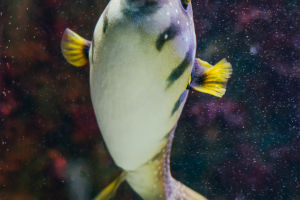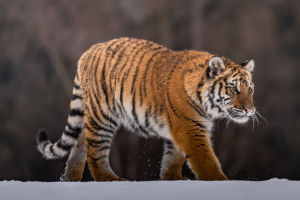Foxes, in terms of animal taxonomy, belong to the family Canidae of the order Carnivora, and the main breeding species are silver foxes (Vulpes vulpes fulva), which are subspecies of red foxes.
Foxes have a high reproductive rate, strong disease resistance, varied diets, and are easy to raise. Red foxes are mainly found in the mainland of the country, while sand foxes are distributed in Xinjiang, Inner Mongolia, Qinghai, Gansu, Tibet, and other places.
Foxes are very clever; most canids obtain their prey by running, but foxes can wait in ambush or use tactics such as slapping east and west to prey on small animals such as mice and rabbits. Traps laid by humans have almost no effect on foxes, as they can take away the food used as bait and escape from the traps by themselves. Some foxes even play dead when they encounter humans.
When people hear the word "fox," the image of a red fox, the most common species of red fox, usually comes to mind first. In fact, there are many fox species in the world that people have not seen, they have striking stripes, beautiful colors, and distinctive characteristics. Next is to introduce the nine most beautiful foxes in the world.
1. Crab-eating fox
The crab-eating fox has short, thick fur ranging in color from taupe, and yellow to dark gray. They have black markings on their hind feet and back. Its snout, ears, and paws are reddish. The tail, feet, and ear tips are black. The body is narrow and the feet are short and strong. The tail is densely furred and stands erect when excited. Ears are broad and round.
2. Cross Fox
The body shape of the cross fox is similar to that of a red fox, with black limbs and abdomen, brown head, shoulders, and back. The front shoulders and back of the cross fox also have black cross patterns, which are as unique as ninjas.
3. South African fox
The South African fox is light in stature, quick in action, and has ocher-yellow fur, which is fluffy and fluffy. Among beasts, it is an undisputedly beautiful family. The domesticated South African fox is considerate of people, often curled up into a group, sleeps on the same bed with people, and is inseparable.
4. Silver fox
The outer coat of some parts of the silver fox, especially below the throat, behind the shoulders, on both sides, and the tail is 2 inches longer than the undercoat. The base of the undercoat is brown, followed by gray, while the tips are black. The fur is soft and shiny and was once thought to be finer than that of the pine marten.
5. Marble fox
The marble fox has white fur all over, but has marble-colored hair in black, brown, or pearl on the edges of the ears, forehead, eyes, back, and tail.
6. Gray Fox
Gray foxes look like small dogs with bushy tails. It has black stripes from the eyes to the neck, a short snout, short limbs, large toe pads, curved claws, and rough body hair. Gray foxes have very powerful short legs and sharp claws.
These legs and powerful talons give them great balance and climbing abilities, allowing them to grip tree trunks and branches. The color of the fur is also convenient for hiding itself from predators.
7. Big-eared fox
The body hair of the big-eared fox is yellowish brown, and the ears, legs, and part of the face are black. Big-eared foxes live alone or in small groups, and prefer to live in relatively dry and open areas. Big-eared foxes have much smaller teeth than other canids, due to their adaptation to feeding mainly on insects and foraging at night.
8. Fennec fox
This adorable fox breed is popular for its large, elongated ears. Fennec foxes come from North Africa and the Sahara desert. Their beautiful long ears are not only a cute physical feature but also a tool for them to release body heat.
9. Arctic Fox
The arctic fox has a narrow forehead, a sharp snout, short and round ears, hair on the back of the cheeks, and dense hair on the bottom of the feet, so it is suitable for walking on ice and snow. This fox lives throughout the Arctic Circle. Their fur is white and thick, and they can survive and keep their bodies warm even in the arctic temperature of minus 70 degrees Celsius.


